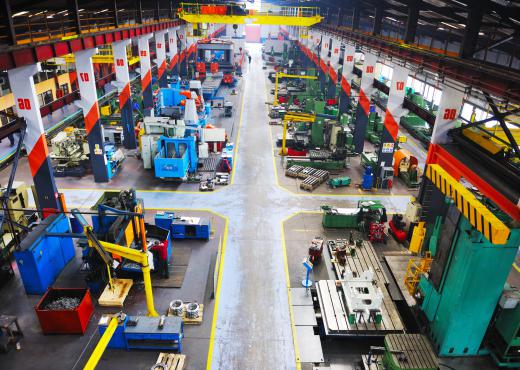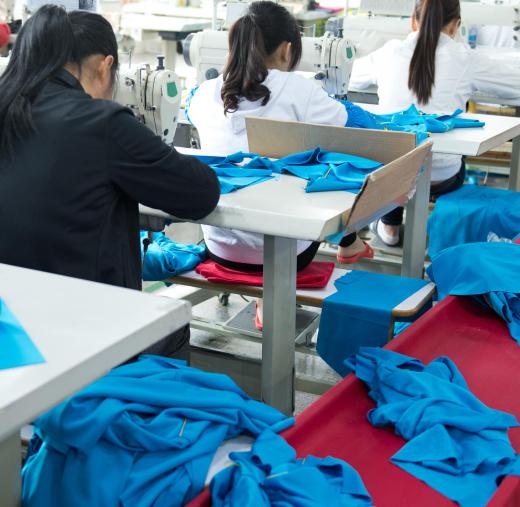Light industry, like heavy industry, has no clear-cut definition. In most other respects, the two are usually not alike, but can often be better understood relative to each other. For instance, light industry requires far less capital investment than heavy industry, is more labor-intensive, and is more often focused on making or servicing goods directly for the retail consumer.
The goods manufactured or assembled by light industry facilities are often packaged for retail sale, leading to the conventional wisdom that it’s more consumer-oriented than heavy industry. In many cases, heavy industry facilities make components for other heavy industry operations. For example, the various components that make up motor vehicles — such as engines, tires and window glass — are themselves produced in other facilities considered heavy industry operations. Many other heavy industry facilities produce goods like railroad locomotives, military tanks and ocean liners that aren’t generally sold to the average consumer.

The environment is generally impacted far less severely by light industry than by heavy industry, which includes among its applications such diverse polluting activities as petroleum refinement, steel milling and mining. Most heavy industry operations also impose a giant footprint on the earth, frequently occupying facilities which cover many acres. Many light industrial applications can set up shop in small spaces designed for general commercial use, often needing very little renovation or adaptation. Where light industry does pose some environmental risk, such as a woodworking shop or a metal-plating operation, a minimum of special equipment is often sufficient to ameliorate the impact.

In comparison with heavy industry, most light industrial operations require only minimal investments to establish, and can soon start producing the goods or services that will generate revenue. A heavy industrial facility, by contrast, might take years from ground-breaking until actual operation, considering the hurdles posed by environmental issues alone. Technological advancements might reduce environmental pressures, but the wide variety of issues involved in establishing a heavy industry facility almost guarantee that it's going to be a more complex, time-consuming and costly endeavor than establishing a light industrial operation.
Light industry is more labor-intensive, in many cases, than heavy industry, but this isn’t a hard-and-fast rule. Old technology heavy industries, such as textile mills and auto manufacturers, typically employ thousands of people and dominate the local economies where they operate. This domination of the economy by heavy industry has significant drawbacks — if a plant closes or even just shuts down for a short period of time, the impact on the local and regional economies is dramatic. By dispersing the same number of jobs among many smaller light industry employers, more stability is introduced to an area’s economy.
